In 142 AD, during the Han Dynasty, a man named Wei Boyang was the first to write anything about gunpowder. He wrote about a mixture of three powders that would “fly and dance” violently.
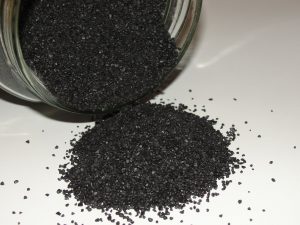
Image source: https://en.wikipedia.org/wiki/Gunpowder#/media/File:Black_Powder-1.JPG
Gunpowder is the first explosive to be developed. Considered to be one of the “Four Great Inventions” of China, it was discovered during the late Tang dynasty (9th century) but the first evidence of a written formula appeared during the Song dynasty (11th century).
Who discovered gunpowder?
Although it is not known precisely whom gunpowder was discovered by, most historians agree that gunpowder’s origins were in China due to the amount of archaeological evidence and historical documents that exist predating others by centuries.

Image source: https://commons.wikimedia.org/wiki/File:Ming_Dynasty_eruptor_proto-cannon.jpg
The very earliest possible reference to gunpowder appeared in 142 AD during the Eastern Han dynasty when the alchemist Wei Boyang wrote about a substance with the properties of gunpowder. He described a mixture of three powders that would “fly and dance” violently in his Cantong qi, otherwise known as the Book of the Kinship of Three, a Taoist text on the subject of alchemy. Although it is impossible to know if he was referring to gunpowder, no other explosive known to scientists is composed of three powders. Taoist alchemists continued to play an important role in the development of gunpowder due to their experiments with sulfur and saltpeter involved in the search for eternal life and ways to transmute one material into another.
How is gunpowder made?
To make gunpowder you need to mix fifteen parts of saltpeter to three parts of coal and two parts of sulfur.
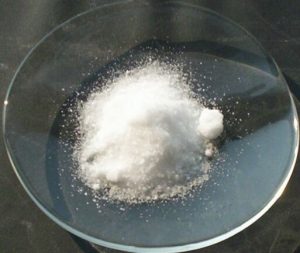
Image source: https://en.wikipedia.org/wiki/Potassium_nitrate
The reason gunpowder explodes is that this mixture burns very fast. When it burns, it releases gases of a larger volume than the original dust.
Initial use of gunpowder
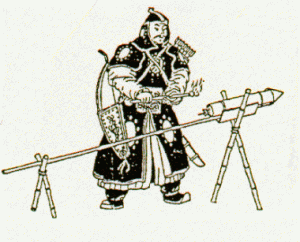
Image source: https://en.wikipedia.org/wiki/Four_Great_Inventions#/media/File:Chinese_rocket.png
Many Western history books have claimed that the Chinese used this discovery only for fireworks, but that’s not true. The military forces of the Song Dynasty as early as 904 A.D. they used gunpowder devices against their main enemy, the Mongols. These weapons included “flying fire” (fei huo), an arrow with a burning tube of gunpowder attached to the shaft. The flying fire arrows were miniature rockets, which pushed through the enemy ranks. For the first warriors who were confronted with the power of gunpowder, it must have seemed like frightening magic.
The spread of gunpowder outside China
From the mid to late 11th century, the Song government had been concerned with the spread of gunpowder technology to other countries. The sale of saltpeter to foreigners was banned in 1076. However, knowledge of this substance was carried along the Silk Road to India, the Middle East, and Europe. In 1267, a European writer referred to gunpowder, and in 1280 the first recipes for the explosive mixture were published in the west thus revealing the secret of China.
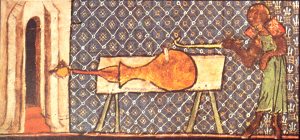

Image source: https://en.wikipedia.org/wiki/History_of_gunpowder#/media/File:Lgehumble_1400.jpg
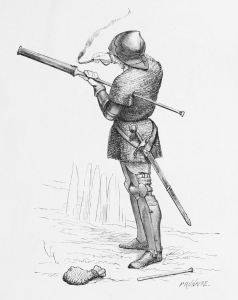
Image source: https://en.wikipedia.org/wiki/History_of_gunpowder#/media/File:06-357.png

Image source: https://en.wikipedia.org/wiki/Gunpowder#/media/File:Barout_khaneh_near_Tehran_by_Eug%C3%A8ne_Flandin.jpg
Over the centuries, Chinese inventions have had a profound effect on human culture. Objects such as paper, the magnetic compass, and silk have spread all over the world. However, none of these inventions had the same impact as gunpowder.
